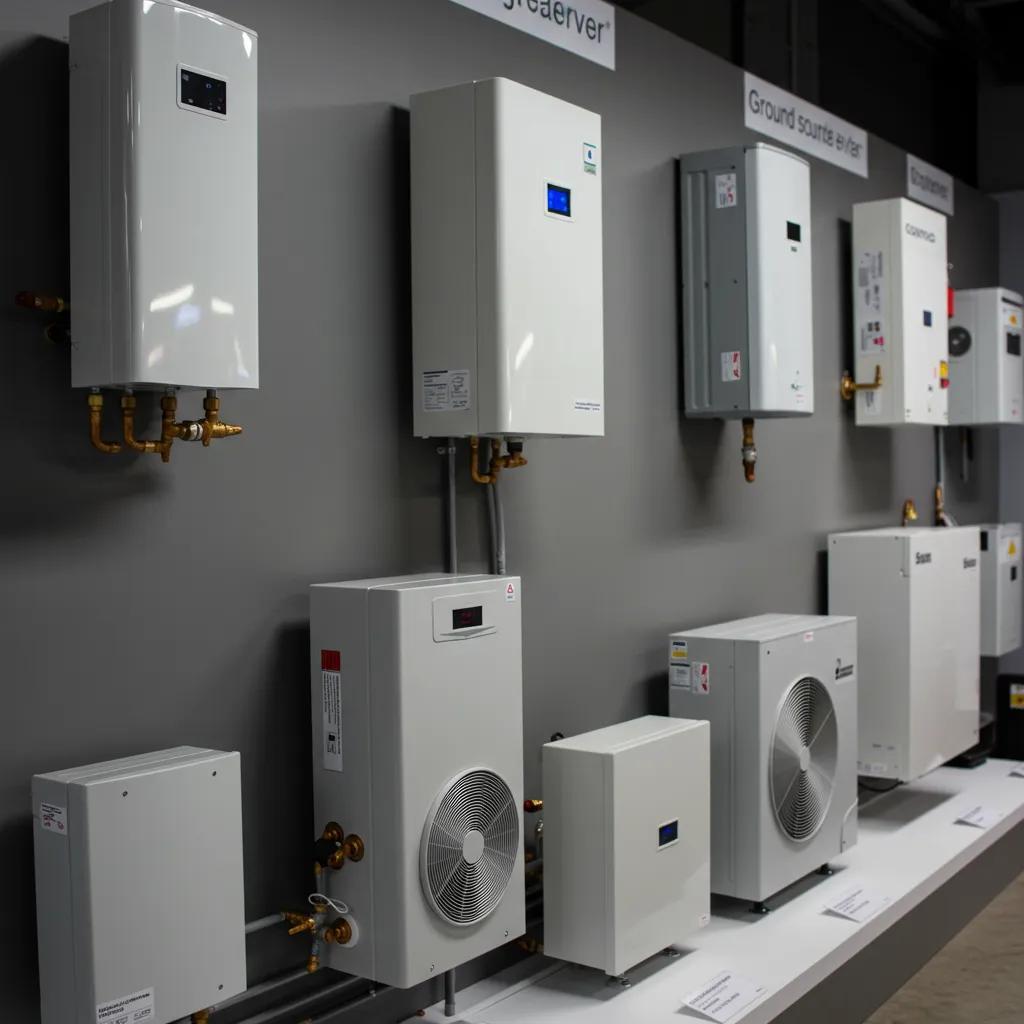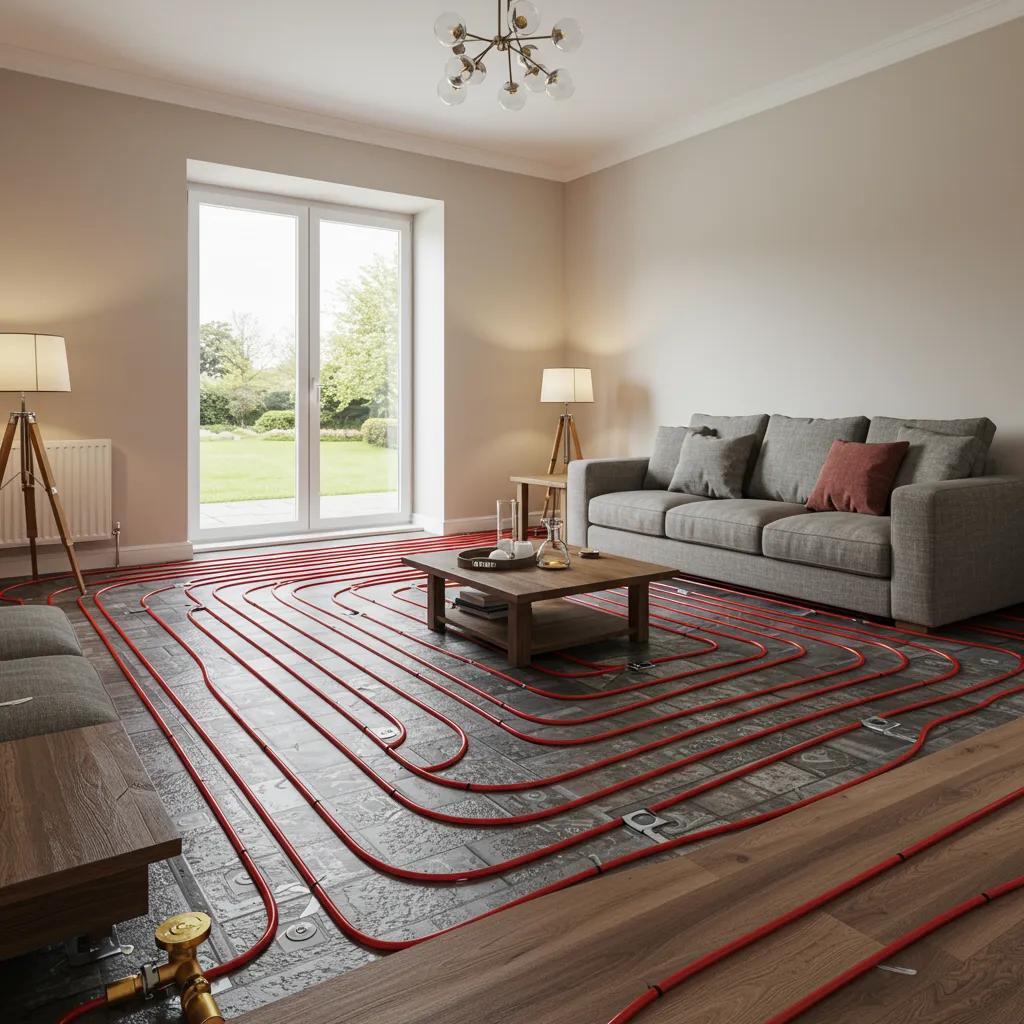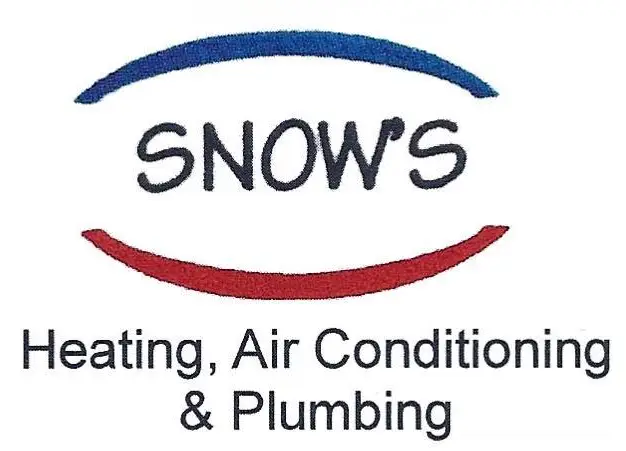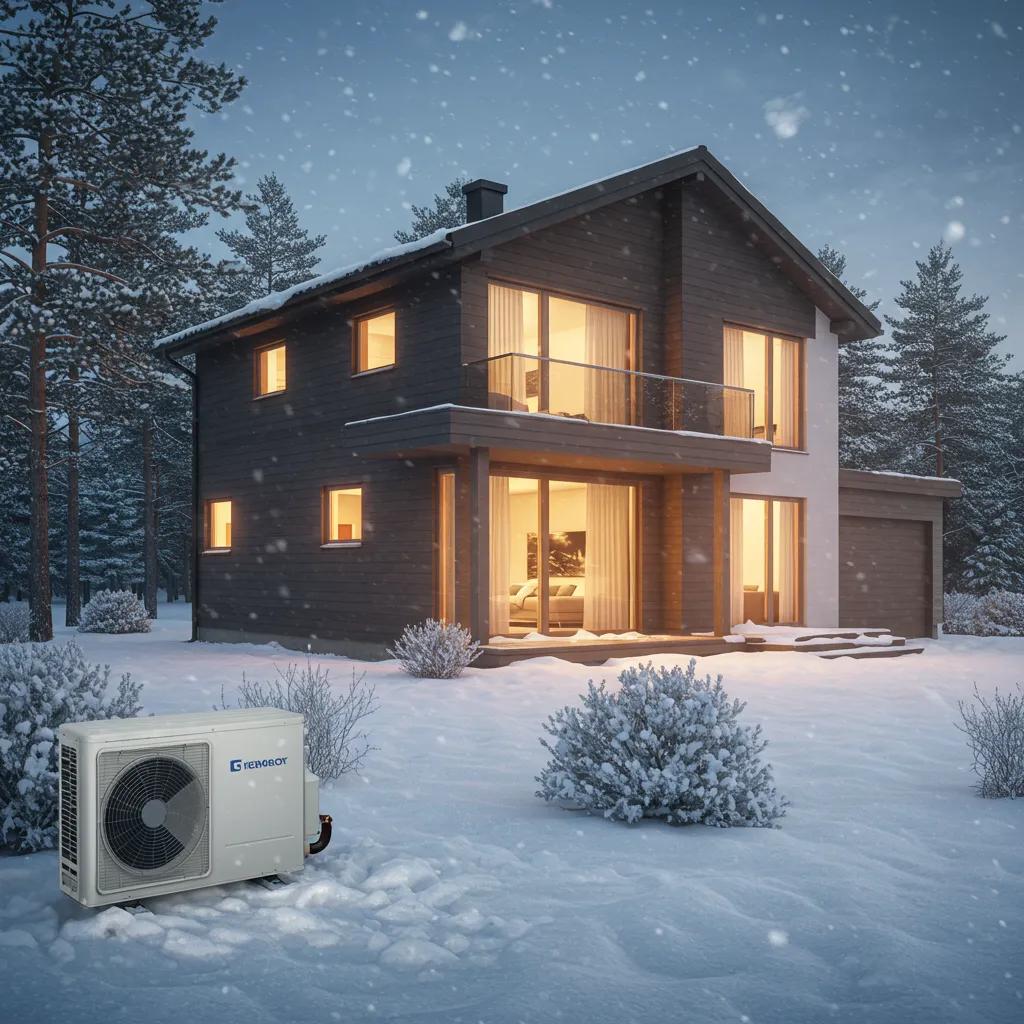Designing Your New Home's Heating System: Smart, Efficient, Low-Carbon Choices
Building a new home in Ferron, UT means creating a heating system that’s comfortable, compliant, and kind to the planet from the start. A well-designed heating system not only saves you money on energy bills for years to come but also meets current building standards and reduces your home’s carbon footprint. This guide will walk you through the latest regulations, compare eco-friendly heating options, show you how to get the best heat distribution, explain costs and available support, and cover essential planning steps for new builds. You’ll also see how Snow’s Heating uses its local knowledge to create efficient, low-carbon heating solutions tailored to your needs, giving you the confidence to choose the perfect system for your new home.
What Are the Latest Regulations Impacting Heating System Design for New Homes?
New home heating designs must meet specific standards for efficiency, water temperature, and carbon emissions to ensure sustainable performance. The Future Homes Standard is phasing out traditional gas boilers, requiring all new homes to use low-carbon heating like heat pumps. Part L Building Regulations set a maximum water flow temperature of 55 °C for wet systems and emphasize energy-efficient building construction, aiming for Energy Performance Certificate (EPC) ratings of A or B. These regulations work together to integrate insulation, system efficiency, and carbon reduction goals into every aspect of your heating system’s design.
What Is the Future Homes Standard and How Does It Affect New Build Heating?
The Future Homes Standard mandates that new homes must have low-carbon heating systems, cutting CO₂ emissions by at least 75% compared to current gas boiler systems. By banning conventional boilers from 2025, it encourages the widespread use of heat pumps, solar thermal, or hybrid heat pump systems to meet these new benchmarks. For instance, combining an air source heat pump with ground-source loops can ensure compliance while providing comfortable temperatures year-round in new constructions.
Low-Carbon Dwellings: Attaining Thermal Comfort and Energy Efficiency
Low-carbon dwellings† can assist in reducing residential energy demand by achieving thermal comfort through passive heating and by minimising the requirement for active heating systems. This can be accomplished through a combination of enhanced building fabric, efficient heating apparatus, and occupant behaviour.
Low-carbon homes, thermal comfort and household practices: Uplifting the energy-efficiency discourse, L Romanach, 2017
How Do Part L Building Regulations Influence Heating System Efficiency?
Part L regulations limit the flow water temperature for wet central heating to a maximum of 55 °C and set strict U-value targets for walls, floors, and roofs to minimize heat loss. By capping the flow temperature, Part L promotes the use of low-temperature heating elements, such as underfloor heating and specially designed radiators, which work more efficiently with heat pumps. This approach lowers overall energy consumption and aligns system design with current performance standards.
What Are EPC Ratings and Why Do They Matter for New Home Heating?
EPC ratings assess a property’s energy efficiency on a scale from A (most efficient) to G (least efficient). New homes are designed to achieve A or B ratings by incorporating high-performance insulation, airtight construction, and efficient heating technologies. A high EPC rating not only meets legal requirements but also leads to lower heating bills and a higher property value, highlighting the importance of a well-integrated heating system design.
How Are US Building Codes Reflected in Heating System Design for Ferron, UT?
While US federal and state energy efficiency standards set the direction for low-carbon heating and heat pump adoption, Ferron’s colder mountain climate requires heating system designs that maintain heat pump efficiency even in freezing temperatures. Local designs often include larger heat emitters (such as radiant floors or larger baseboards), enhanced insulation and air-sealing (often exceeding minimum code requirements), and hybrid backup heating systems (e.g., natural gas or propane) to ensure comfort and reliable performance during colder periods. By adapting national efficiency goals and best practices to local extreme conditions, homeowners can benefit from highly efficient systems without compromising on reliability.
Which Low-Carbon Heating Systems Are Best Suited for New Build Homes?

For new builds, low-carbon heating systems focus on technologies that are highly efficient, reduce emissions, and integrate smoothly with modern building designs. Heat pumps use ambient air or ground heat to deliver up to four times more energy than they consume. Electric radiators and infrared panels offer straightforward installation where space for ductwork or pipes is limited. Each of these options supports carbon reduction goals and can be precisely sized for new constructions, ensuring comfort and compliance in every room.
Why Are Heat Pumps Becoming the Standard for New Build Heating?
Heat pumps are incredibly energy-efficient, drawing thermal energy from the air or ground and transferring it inside. This significantly reduces reliance on fossil fuels, leads to lower running costs, and works perfectly with underfloor heating and low-temperature radiators. As energy prices continue to rise, builders are increasingly choosing heat pumps as the standard heating system for new homes, meeting regulations and offering long-term savings.
What Are the Benefits and Limitations of Air Source Heat Pumps in New Homes?
Air source heat pumps provide dependable heating by capturing heat from the outside air and using a refrigerant cycle to transfer it indoors. We specialize in heat pump services for optimal efficiency.
- They can achieve up to 300 percent efficiency (a Coefficient of Performance, or COP, of 3.0), lowering seasonal energy costs.
- Installation is less disruptive, requiring minimal groundwork, and units can be placed near the new build.
- Their performance can decrease in very cold outdoor temperatures, sometimes requiring additional heating elements or a hybrid backup system.
While air source units perform well in milder climates, pairing them with larger radiators or underfloor heating circuits ensures they operate at peak efficiency even in cold weather, making them a practical choice for most new homes.
Low-Temperature Air Source Heat Pumps for Cold Climates
Air source heat pumps (ASHPs) are a key technology for building heating, offering higher energy efficiency compared to fossil fuel sources. The performance of ASHPs can meet heating demands at ambient temperatures as low as −20 °C; however, a long-term performance evaluation of ASHPs in severely cold regions remains necessary.
Low-temperature air source heat pump system for heating in severely cold area: Long-term applicability evaluation, Z Wang, 2022
How Do Ground Source Heat Pumps Compare for New Build Applications?
Ground source heat pumps tap into the stable warmth of the earth using buried pipes, achieving COP values over 4.0 and maintaining consistent performance regardless of outside air temperature.
- While installation costs are higher (typically 20–30% more than air source), they are balanced by lower running costs and longer lifespans.
- They require sufficient land space for boreholes or horizontal pipe loops.
For larger properties, ground source systems offer superior carbon savings and can be integrated with hot water systems for year-round efficiency, making them an excellent choice for high-end new builds.
When Are Electric Radiators and Infrared Panels Viable Alternatives?
Electric radiators and infrared panels convert electricity directly into heat, offering easy placement and flexible zoning without the need for pipes or refrigerants. They are ideal for: heating services ferron ut
- Small additions or outbuildings where a central system isn’t practical.
- Secondary areas needing quick, on-demand heat.
- Homes with their own renewable electricity generation, maximizing carbon savings.
Although the cost per unit of energy can be higher, targeted electric heating supports low-carbon goals when combined with solar panels or off-peak electricity tariffs, providing flexible solutions for specific needs.
How Can Heat Distribution Be Optimized in New Homes?
Effective heat distribution ensures consistent comfort throughout your home while maximizing system efficiency and user control. Heating elements like underfloor heating and specially designed radiators provide steady, low-temperature heat that complements heat pump performance. Smart thermostats and zoned heating systems allow homeowners to adjust temperatures room by room, reducing energy waste and improving overall responsiveness.
What Are the Advantages of Underfloor Heating in New Build Properties?

Underfloor heating operates at water flow temperatures between 35–45 °C, perfectly matching heat pump output and potentially improving COP by up to 10%.
- It delivers even warmth across the entire floor, eliminating cold spots.
- It integrates seamlessly into screed floors during construction, maintaining a clean aesthetic.
- It operates silently and frees up wall space, offering greater design freedom.
By embedding heating pipes beneath the finished floor, new homes achieve superior thermal comfort, reduce heat loss in circulation, and simplify emitter planning, all while working efficiently with low-temperature systems.
Modelling Underfloor Heating Systems with Heat Pumps
The underfloor heating systems supplied by heat pumps, in comparison to conventional radiator-based heating systems, benefit from the large thermal mass of the floor structure, which can store and release heat gradually. This characteristic facilitates more stable room temperatures and reduces the requirement for frequent heat pump cycling.
Modelling and simulation of underfloor heating system supplied from heat pump, M Akmal, 2016
How Do Smart Thermostats and Zoned Heating Improve Energy Efficiency?
Smart thermostats use sensors, weather data, and intelligent algorithms to precisely control heating only when and where it’s needed.
- They allow for multi-zone control, meaning you can turn off heating in unused areas.
- Remote access and scheduling let you match energy use to your lifestyle.
- Their learning capabilities optimize temperature settings over time, potentially increasing seasonal efficiency by up to 15%.
This precise control minimizes energy waste and enhances comfort, integrating smoothly with modern HVAC designs to provide targeted warmth throughout larger new homes.
What Radiator Types Work Best with Low-Temperature Heating Systems?
The table below compares common heating element options based on their performance and suitability:
| Radiator Model | Flow Temperature (°C) | Heat Output (W/m²) | Ideal Application |
|---|---|---|---|
| Low-Profile Panel Radiator | 45 | 120 | Living rooms and bedrooms |
| High-Output Flat-Plate | 55 | 140 | Open-plan areas and high ceilings |
| Aluminium Column Radiator | 40–50 | 130 | Hallways, bathrooms with quick response |
Each radiator type performs best when matched to specific room needs, ensuring low-temperature elements work effectively with heat pump systems.
What Are the Typical Costs and Financial Benefits of New Build Heating Systems?
Investing in an efficient heating system for your new home involves understanding the initial installation costs, ongoing running expenses, and the financial incentives that make it a worthwhile investment. High-efficiency heat pumps generally have a higher upfront cost than traditional boilers, but they operate at a much lower running cost and often qualify for grants that help offset the initial expense. Over a 20-year lifespan, the total cost of ownership is frequently lower than less efficient systems, while also reducing your carbon footprint and increasing your property’s value.
How Much Does Installation of Heat Pumps and Other Systems Usually Cost?
Installation costs vary depending on the system type, its capacity, and site-specific conditions. The table below provides typical cost ranges for a 2,000 sq ft new home: AC installation
| System | Installation Cost (USD) | Installation Notes |
|---|---|---|
| Air Source Heat Pump (10 kW) | 12,000–18,000 | Includes exterior unit and internal manifold |
| Ground Source Heat Pump (10 kW) | 18,000–25,000 | Boreholes or horizontal loops required |
| Underfloor Heating Circuit | 5,000–8,000 | Screed installation during construction phase |
| Electric Infrared Panels | 3,000–4,500 | Plug-and-play, minimal wiring |
What Are the Long-Term Running Costs of Heat Pumps Versus Traditional Boilers?
Heat pumps can cut annual heating bills by 30–50% compared to gas boilers, thanks to their COP values of 3.0–4.0, whereas boilers typically operate at around 90% efficiency. Over a 20-year equipment lifespan, the total savings on energy costs often surpass the initial installation investment, especially when using electricity from renewable sources. This operational advantage strongly supports the integration of heat pumps in modern new homes.
Which Grants and Incentives Are Available for New Build Heating Systems?
Federal and state incentives can reduce the net cost of installation by up to 30% for eligible heat pump projects. Key programs include:
- A tax credit covering a portion of equipment costs for air source and ground source heat pumps.
- Rebates from local utility companies for systems with high seasonal performance factors.
- Low-interest financing options specifically for energy-efficient new construction projects.
Taking advantage of these incentives can significantly shorten the payback period and demonstrate the financial sense of choosing advanced heating solutions.
What Key Design Considerations Should Be Made for New Home Heating Systems?
Successfully designing a heating system involves accurate load calculations, coordinating building fabric performance, and integrated HVAC planning. Properly sizing equipment avoids inefficiencies and excessive energy use, while excellent insulation reduces peak heating demands. Incorporating shared ductwork or piping for both heating and future cooling systems ensures adaptability as your needs change.
How Should Heating Systems Be Sized for New Build Homes?
Heating loads are determined by calculating the building’s geometry, insulation levels, and local climate data to establish the peak kilowatt (kW) requirement. Oversized systems cycle on and off too frequently, wasting energy, while undersized systems struggle to keep the home warm on the coldest days. Professional load assessments ensure that the selected heat pumps or boilers precisely match the design conditions and the heating needs of the floor area.
What Role Does Insulation and Building Fabric Play in Heating Design?
High-performance insulation and airtight building envelopes significantly reduce heat loss, potentially cutting heating demand by up to 40%. The U-values of walls, roofs, and floors, along with the performance of windows, are crucial factors in designing a heating system that requires less output. When the demand for heating energy decreases, homeowners benefit from smaller equipment, lower running costs, and improved indoor comfort.
How Can Heating and Cooling Be Integrated in New Build HVAC Systems?
Combining heating and cooling into a single heat pump system allows the same outdoor unit to provide air conditioning in the summer and heating in the winter. Using shared ductwork or manifolds enables a seamless switch between modes, maximizing equipment use and simplifying installation. This integrated HVAC approach future-proofs your comfort system against evolving climate control needs.
How Does Snow's Heating Provide Expert Heating System Design for New Builds in Ferron, UT?
Snow’s Heating combines local climate knowledge, expertise in regulations, and a personalized design process to deliver new home heating systems that are compliant, cost-effective, and efficient. Every project starts with a site evaluation to understand heat loss patterns, your preferences, and potential for future expansion. By using advanced sizing tools and partnering with leading heat pump manufacturers, Snow’s Heating ensures every new build meets regulatory standards and performs at its best.
What Makes Snow's Heating a Trusted Local HVAC Business?
As a long-established HVAC provider in Ferron, UT, Snow’s Heating holds certifications in renewable energy installations and consistently receives high customer satisfaction ratings. Our technicians undergo continuous training with manufacturers, ensuring that system installations adhere to the latest efficiency standards and warranty requirements. Our local presence and proven track record build trust in our project delivery and long-term service reliability.
How Does Snow's Heating Tailor Heating Solutions to Individual New Builds?
Snow’s Heating customizes each design by analyzing building performance data and homeowner usage habits to optimize the selection of heat pumps, the sizing of emitters, and the integration of controls. This personalized approach balances budget, space requirements, and comfort preferences to create systems that operate efficiently even in extreme local temperatures. Flexible zoning options provide individual room control and maximize energy savings.
How Can Homeowners Request a Heating System Design Quote or Consultation?
Homeowners can schedule a personalized consultation by calling Snow’s Heating or by submitting their project details through our contact form. During this initial meeting, our design team will review your architectural plans, discuss your comfort goals, and explain available incentive opportunities. A detailed proposal will follow, including equipment specifications, cost breakdowns, and projected energy savings—empowering you to proceed with confidence.
What Are the Most Common Questions About Heating System Design for New Homes?
New home clients often ask which heating systems will be required after 2025, how much they can save on their energy bills, and whether advanced technologies can reliably perform in Ferron’s cold climate. They also inquire about installation timelines and the practicality of underfloor heating in different construction types. Addressing these questions upfront helps homeowners set realistic expectations and plan effectively.
What Heating Systems Will Be Mandatory for New Builds After 2025?
Starting in 2025, all new homes will be required to have low-carbon heating systems, primarily heat pumps, under the Future Homes Standard, effectively phasing out gas boilers. This regulation ensures new residences meet strict carbon reduction targets and encourages the early adoption of renewable heating technologies.
How Much Can New Build Homeowners Save on Energy Bills with Efficient Heating?
New builds equipped with high-efficiency heat pumps and modern insulation typically achieve annual energy savings of £800–£1,200 compared to homes heated by traditional boilers. Over a 20-year period, these cumulative savings can often exceed tens of thousands of pounds, making efficient system design a smart investment in lower utility costs.
Are Heat Pumps Effective in Cold Climates Like Ferron, UT?
Modern heat pumps maintain high efficiency down to -15 °C thanks to variable-speed compressors and advanced refrigerant cycles. When paired with larger emitters and optional hybrid backup systems, they provide reliable heating performance even during prolonged cold spells, ensuring consistent indoor comfort.
How Long Does Installation of a New Heating System Typically Take?
Installing a complete heat pump and emitter system for a standard new build usually takes between two to four weeks, including system setup and control configuration. Ground source systems might require additional time for installing the underground loops, but the overall project timeline generally aligns with typical construction schedules.
Can Underfloor Heating Be Retrofitted or Is It Only for New Builds?
While underfloor heating integrates most seamlessly during new construction, slim-profile electric underfloor panels and low-profile water systems are available for retrofitting into existing homes. However, full screed installations during new builds offer the best efficiency, aesthetics, and integration with heat pump systems.
Designing a heating system for a new home requires a comprehensive approach that balances regulatory demands, carbon-saving technologies, and specific site conditions. By comparing your options, optimizing heat distribution, and considering the costs involved, you can choose systems that provide comfort, meet regulations, and deliver long-term savings. Snow’s Heating combines local expertise with tailored design processes to bring these advanced, efficient solutions to new builds in Ferron, UT—turning your vision into a reality of reliable, low-carbon living.
To learn how our team can help with your project, get in touch today and take the first step towards a smarter, greener home.


